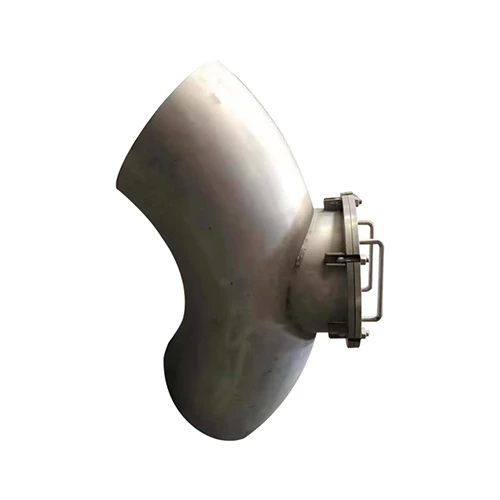Understand The Steel Materials Commonly Used In Stainless Steel Elbows
The principle for determining the heating temperature of stainless steel elbows is that the material is above the austenitizing temperature, and the main compressive stress of the inner wall of the elbow is less than the limit of the material at this temperature during pushing. The higher the austenitizing temperature of the material, the higher the heating temperature; the higher the high-temperature yield limit of the material, the higher the heating temperature. The temperature measurement method is a combination of a fixed far-infrared thermometer and a manual far-infrared thermometer, which is directly controlled by the shape of the induction coil and the relative position of the induction coil and the mandrel head. The shape of the induction coil is the main factor, and the relative position of the induction coil and the mandrel head is a secondary factor. The high heating temperature increases the wall thickness of the stainless steel elbow. The effect of the pushing speed on the geometric shape of the pushed elbow. The pushing speed is an important process parameter, and the elongation of the outer wall of the elbow is directly controlled by the flow regulation of the hydraulic system to be less than the elongation of the material at this temperature.
Below, let's take a look at the commonly used steels for Stainless Steel Weld Elbow:
1. Austenitic stainless steel: stainless steel with a matrix of austenite (γ phase) with a face-centered cubic structure, which is non-magnetic and mainly strengthened (and may cause magnetism) by cold working;
2. Austenite-ferrite (duplex) stainless steel: stainless steel with a matrix of austenite and ferrite (the content of the lesser phase is generally greater than 15%), magnetic, and can be strengthened by cold working;
3. Ferritic stainless steel: stainless steel with a matrix of ferrite (α phase) with a body-centered cubic crystal structure, which is magnetic and cannot be hardened by heat treatment, but can be slightly strengthened by cold working;
4. Martensitic stainless steel: stainless steel with a martensitic matrix, magnetic, and whose mechanical properties can be adjusted by heat treatment;
5. Precipitation hardening stainless steel: stainless steel with a matrix of austenite or martensitic structure, which can be hardened (strengthened) by precipitation hardening (also known as aging hardening).
